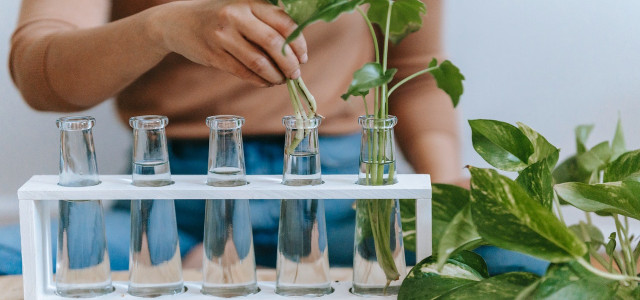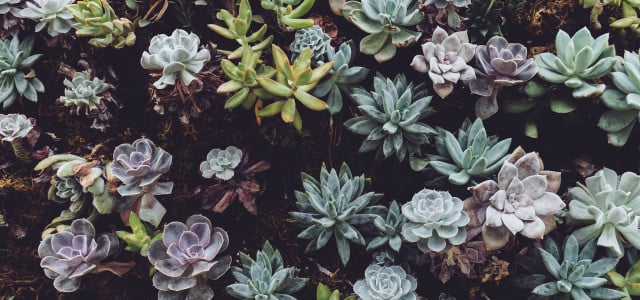The best way to grow your houseplant collection is to use the plants you already have. By using water propagation, you can easily increase the number of plants in your home or share them with friends. We’ll show you what you need to know about rooting and propagating plants in water.
Some plants require to be immersed in soil in order to grow roots, but many need only water. Water propagation is simply the process of taking a part of a mother plant and growing it into a new plant by placing it in water and allowing it to grow roots.
Why Propagate Plants?
Ask any houseplant enthusiast out there, and their answer will be that there’s no such thing as too many plants. Propagating plants is a great way to add more plants to your home, or swap with others to get cuttings of different types of houseplants. It is also a more reliable method of growing plants than starting with seed, as it can lead to quicker results. Plus, did you know you could grow vegetables from scraps? For this reason alone, it’s worth learning how to propagate plants in water!
Water Propagation: Step by Step
You’ll need:
- Plant to propagate
- Clean scissors or garden shears
- Glass jar filled with water (room temperature is best)

1. Pick Your Plant
For the purpose of this article, we’re using a watermelon peperomia, because it is genuinely one of the easiest plants for water propagation.
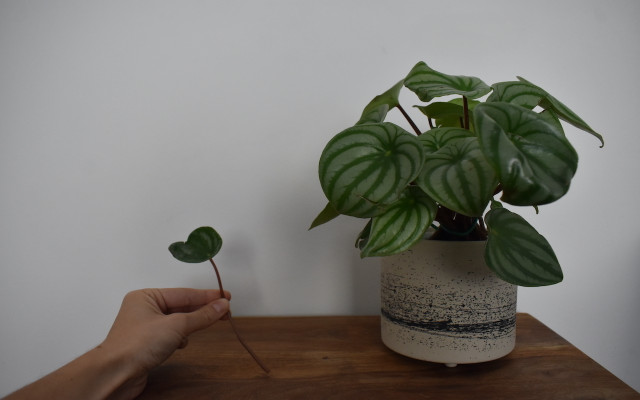


2. Make Your Cutting
Using clean scissors, choose one of the leaves and cut the stem. For plants that have nodes, you’ll want to choose a piece that’s about 4-6 inches long just below a root node. You can easily do more than one at a time.
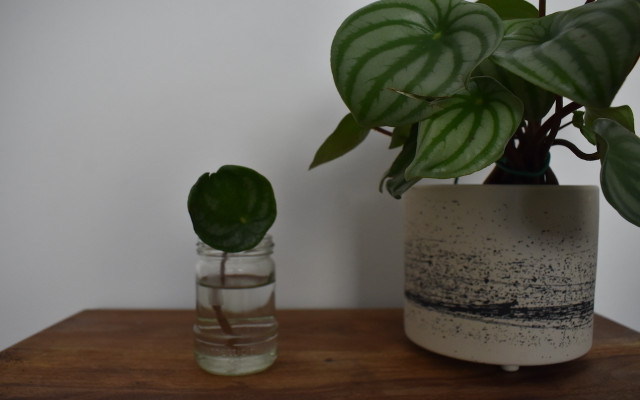


3. Place in Water
After you’ve made the cutting, place it in a glass jar filled with room temperature water and place it where it will receive bright, indirect sunlight. If you want to propagate the successfully, make sure to change the water every few days.
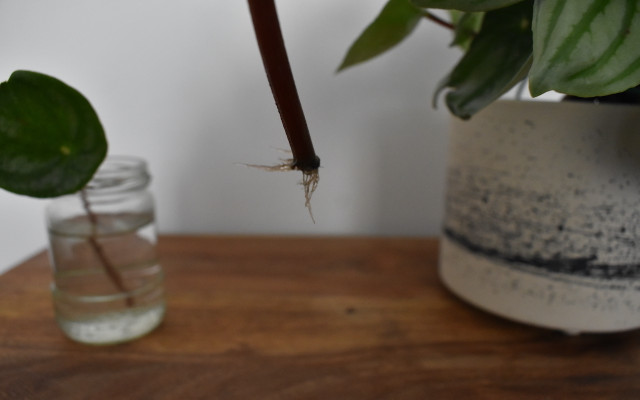


4. Wait for Roots
This is where patience comes in handy. There is no concrete rule for how long plants take to grow roots as it depends on a variety of factors including light and temperature. For a watermelon peperomia, you’ll start to see root growth in about a month.
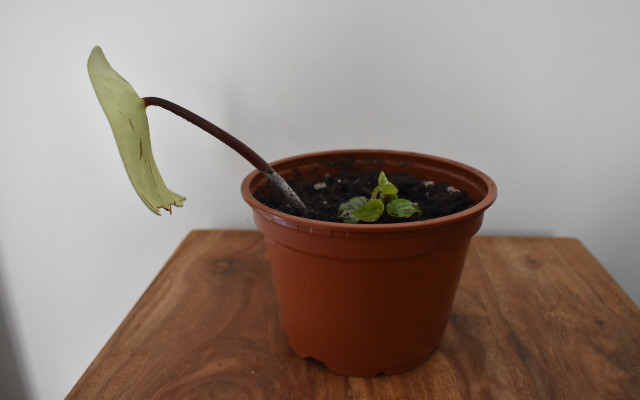


5. Transplant
Once little stems and leaves appear near the roots, it’s time to transplant your cutting into potting soil. Once the plant is more established, you can cut off the large leaf and enjoy your new plant!
Water Propagation Tips
Water Requirements
When propagating plants in water, it’s important to replace the water every few days. If the water isn’t looking murky or dirty, you can also top it up. Filtered water is often best for new cuttings because the naturally occurring salts and minerals in tap water can be a bit of a shock to the system. Tap water across the country is very different, so feel free to use either option.
Proper Light for Rooting Plants in Water
North- or east-facing windowsills are the ideal location for rooting plants in water because they will only get the soft morning sunlight. You can also place your cuttings anywhere that receives bright to moderate indirect light. Just remember: if you place them in a low-light location, you probably won’t see any results.
Soil for Transplanting
For best results, choose the soil most appropriate for the plant you are propagating. Generally speaking, an all-purpose potting mix will do. It’s important to wait until the roots are at least 1 inch, if not longer. Once the roots are potted in fresh potting mix, water it with room temperature water and keep in a bright spot with indirect light. Once the plant has grown to an appropriate and stable size, you can move it to your preferred location.
Best Time of Year for Water Propagation
Summer is when plants are doing most of their growing, and it’s the best time to try and grow new ones too. Also use the sunny months to transplant and repot any plants that have outgrown their home. You can try water propagation at any time of the year, the cuttings will just take a bit longer to establish some roots.
Rooting Plant Hormone?
You really can grow new plants from what you already have at home. If you want to speed up the process, you can find products containing natural auxins (chemicals that tell the plant to root) in liquid, gel, and powder form. The hormone can be applied to the cut end of the cutting to increase the chances of success. Some home gardeners swear by this, however it isn’t a necessary requirement. We at Utopia suggest using only natural substances to help the plant root and thrive.
Tip: some people make their own organic rooting hormone using honey — just dip the cutting into honey before adding it to the water.
Best Plants for Water Propagation
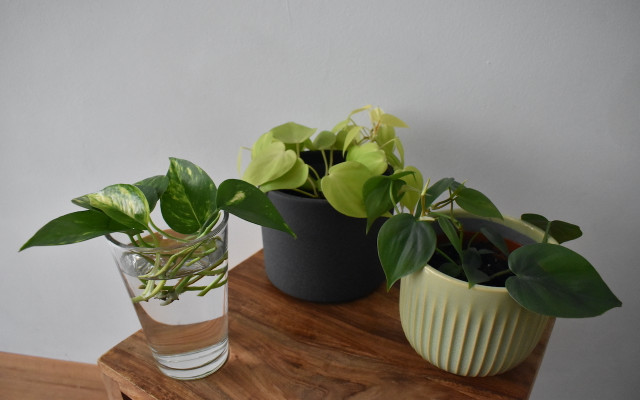


Naturally, certain varieties work better than others when it comes to propagating plants in water. We’ve put together a small list of ones that are easy for beginners:
- Croton
- English Ivy
- Monstera
- Peperomia
- Philodendron
- Polka Dot Plant
- Pothos
- Snake Plant
- Spider Plant
- ZZ Plant
Rooting Herbs in Water
Certain herbs are very easy to propagate in water, which is good news for anyone who doesn’t have much luck with seeds. Try rooting the following plants in water to increase your yield:
- Rosemary (For tips see: How to Propagate Rosemary)
- Basil
- Sage
- Mint
- Oregano
- Lavender
Some of the herbs are very delicate so make sure to check out our tips:
** Links to retailers marked with ** or underlined orange are partially partner links: If you buy here, you actively support Utopia.org, because we will receive a small part of the sales proceeds. More info.Do you like this post?






